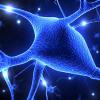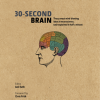News and Press Releases
Jun 19 2015 | Stanford News - Building a Brain - Step 3
When people are confronted with an unknown piece of electronics, one way they can figure out how it works and what it does is to twiddle with the knobs and switches. That's been hard to do with the slick, knob-less surface of the brain.
Jun 19 2015 | Stanford News - Building a Brain - Step 5
The brain is a powerful natural computer, processing millions of signals on the power of nothing more than a sandwich. To reverse-engineer it, you need to mimic that speed and efficiency.
Jun 19 2015 | Stanford News - Building a Brain - Step 2
The neurons in our brains use electrical activity to relay information. A reverse-engineered brain must recreate these processes, but first scientists need to understand them.
Jun 19 2015 | Stanford News - Building a Brain - Step 4
Understanding the brain's mechanics isn't enough to reverse-engineer a functional copy. What's needed is a theory of how those pieces add up to a human being.
Jun 19 2015 | Stanford News - Building a Brain - Step 6
Before digital brains can interact with the world, they will need to see and understand their environment and their place in it. All this requires is digitizing several hundred million years of evolution.
Jun 15 2015 | Stanford Medicine - News Center
Faculty, staff, residents and a student were honored for a variety of contributions to Stanford Medicine at the medical school’s 2015 commencement.
Jun 11 2015 | Stanford Medicine - News Center
Imaging studies have delineated brain networks consisting of discrete brain regions acting in synchrony. This view of the brain’s functional architecture has now been confirmed by a study showing coordination at the genetic level as well.
Jun 9 2015 | Neuwrite West
How does the brain produce thought?
Where is memory encoded in the brain?
How do we reconstruct images in our brain?
Jun 9 2015 | Neurotalk S4E15 Tom Maniatis
Professor Tom Maniatis, Professor of Biochemistry and Molecular Physics at Columbia University speaks about the diversity of protocadherins, the ethics of CRISPR/Cas9, and his many scientific friendships.
Jun 4 2015 | Neuwrite West
“What are the adult brain mechanisms at work when playing the children’s game “Concentration” (memory card game)? This game is beneficial for all ages, but what’s the brain science behind it and how do adults benefit from playing it?”
— Adrianne













